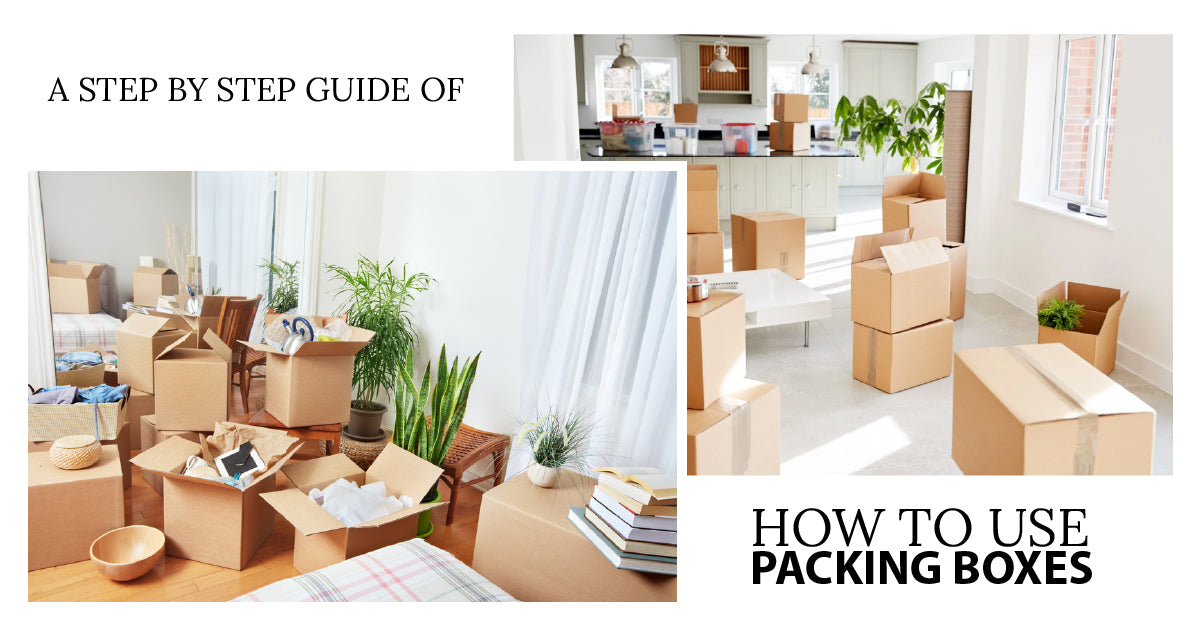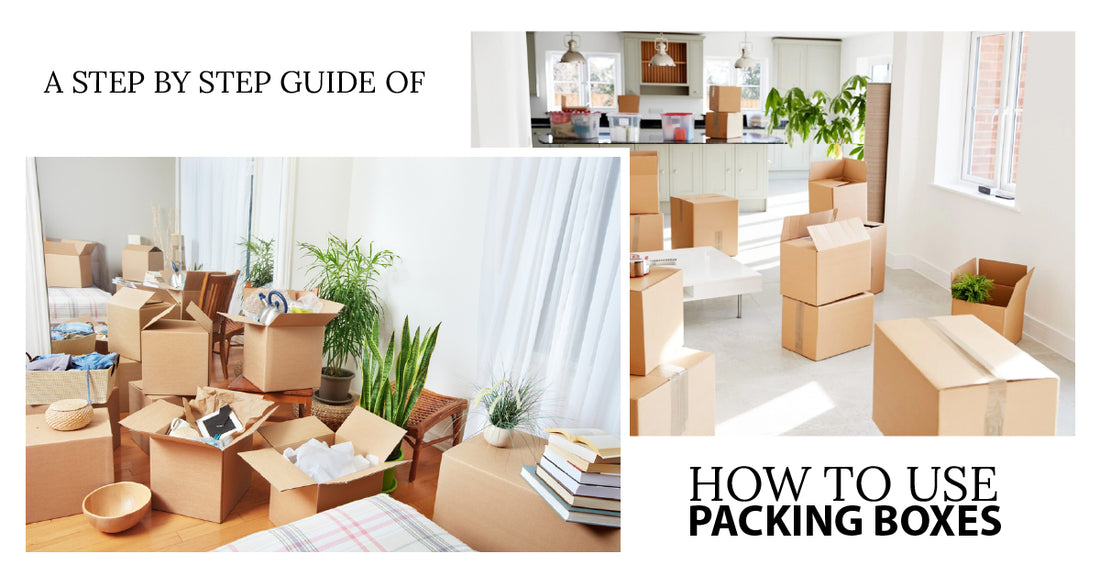
Cardboard boxes for moving are perfect for various purposes, including house moving, office moving, storage, and shipping. They are versatile, eco-friendly, and better for the environment compared to plastic alternatives. Not only are they made from recycled paper, but they can also be recycled after use. There are many different types of boxes available to buy. Let’s explore the different types of boxes and learn how to pack boxes for moving and how to fold cardboard boxes correctly.
1. Ordinary Carton House Moving Boxes
Ordinary carton boxes are the most popular type of packing box. When you think of a typical cardboard box, this is the one. These house moving boxes arrive flat packed. Here’s how to fold a cardboard box and how to fold packing boxes properly:
- Begin by folding the four flaps at one end of the box.
- Secure them using strong packing tape. This is easy: just lift the box and gently press the edges together to form the box shape.
- Put the smaller flaps in first, followed by the longer flaps, and then tape them shut.
- Flip the box over, fill it, and tape the other end securely.
Knowing how to pack a moving box is essential for protecting your items. After folding, stack the boxes neatly for easier moving.
2. Single-Walled and Double-Walled Cardboard Boxes
There are two primary types of ordinary cardboard packing boxes: single-walled and double-walled. Double-walled boxes are sturdier, making them better for heavier items and stacking during transport. This additional strength ensures that items inside are better protected.
3. Archive Boxes
Archive boxes are typically used for office storage. They have removable lids and handle holes, making them perfect for easy access to documents or items. These boxes are not as strong for moving but are ideal for storage. Here’s how to fold boxes like these:
- Fold the lid separately by creasing the flaps on each side.
- The box itself is folded from a long piece of cardboard, and it has grooves where the edges fit together.
4. Wardrobe Boxes
Wardrobe boxes are extra-large house moving boxes, which come with a hanging rail. They are easy to assemble; just insert the rail after setting up the box. How to pack a box for moving is made simple with these, as they keep your clothes wrinkle-free during transit.
5. Specialty Boxes for Fragile Items
When packing fragile or delicate items such as glassware or electronics, it’s important to use boxes designed for extra protection. How to pack a box for moving fragile items requires more attention:
- Choose double-walled boxes for durability.
- Line the bottom with padding materials like bubble wrap or packing peanuts.
- Wrap each fragile item individually, ensuring there are no gaps between items in the box.
- Clearly label the box as "fragile" and avoid stacking heavy items on top.
This method helps ensure that fragile items remain safe during the move.
6. Tips on How to Pack Boxes for Moving
Packing efficiently can save time and space. Here are a few tips:
- Distribute the weight evenly across boxes, avoiding overloading.
- Place heavier items at the bottom and lighter ones on top.
- Use small boxes for heavier items like books and large boxes for lightweight, bulky items like pillows.
- Seal all boxes with strong tape, reinforcing the bottom, especially for heavier loads.
Understanding how to fold a cardboard box and pack efficiently will make your move smoother.
7. Labeling and Organizing Your Boxes
Once your boxes are packed, label each one with its contents and the room it belongs to. This helps movers or yourself easily locate items. Additionally, numbering your boxes will ensure nothing gets misplaced.
Lastly, how to fold packing boxes after the move is also important. After unpacking, these boxes can be folded flat and reused or recycled, making them a sustainable choice.





